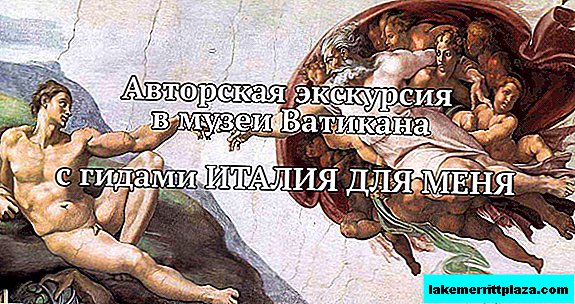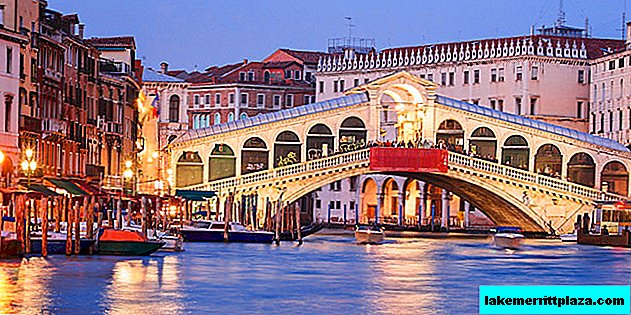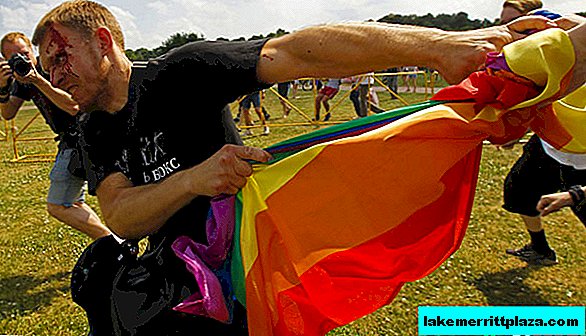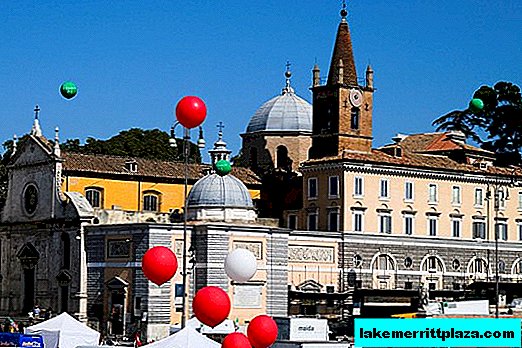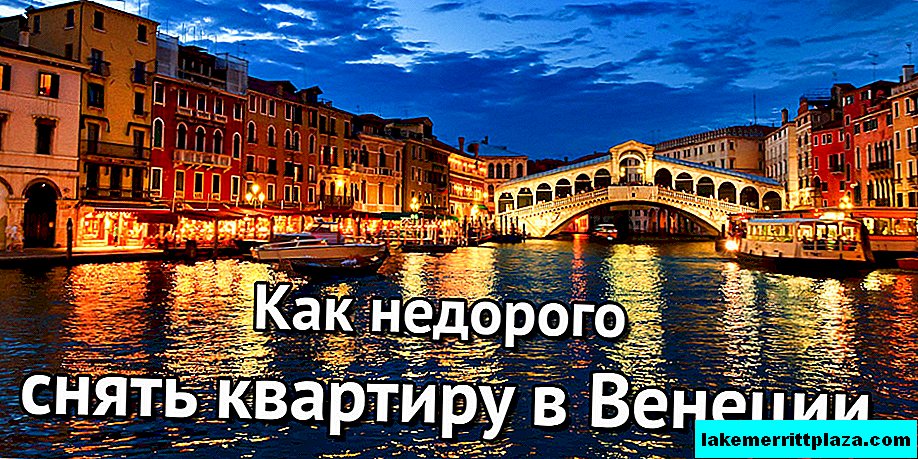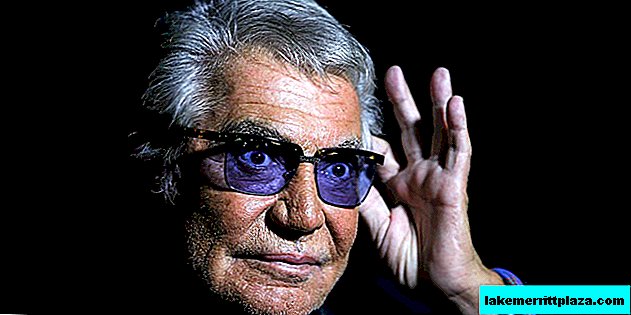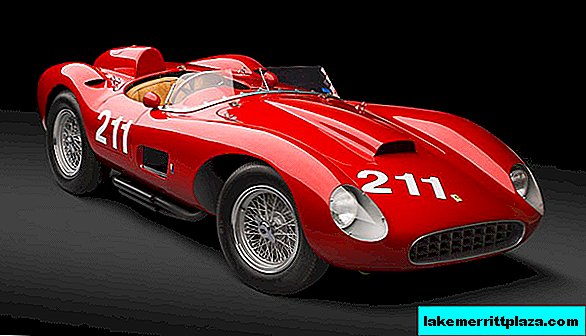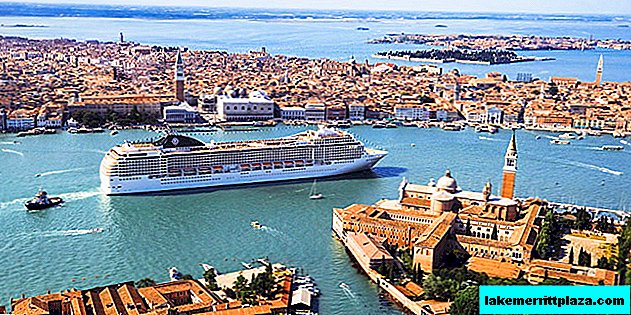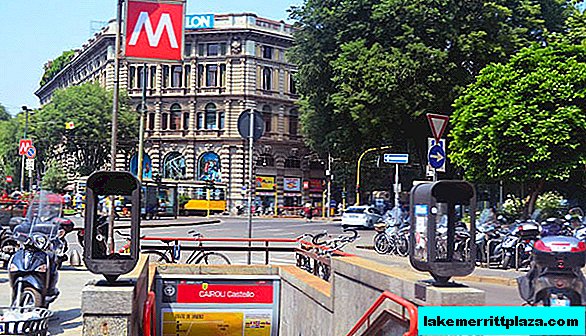Under the capacious signboard of the "Vatican Museums" (Musei Vaticani) hides a galaxy of exhibition halls and galleries. The age of the most venerable expositions is 5 centuries. During this time, the curators of the museums managed to collect an amazing collection of sculptures, paintings, manuscripts, household items and religious art. You can appreciate the masterpieces of world art only in the brilliant frame of the Vatican palaces.
Story
In the XV century, the famous Sistine Chapel (Cappella Sistina) was built in the Vatican. The architect Giovannino de 'Dolci created a modest church building, which was internally decorated with Renaissance craftsmen: Botticelli (Sandro Botticelli), Ghirlandaio (Domenico Ghirlandaio), Rosselli (Cosimo Rosselli) and Perugino (Pietro Perugino). A separate decoration of the chapel is the fresco by Michelangelo di Lodovico, The Last Judgment.
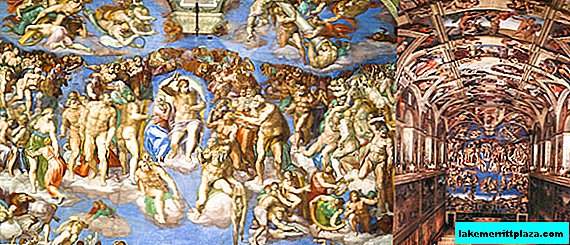
In the late XV - early XVI centuries, another monument of architecture and art appeared on the territory of the Vatican - the Borgia tower (Torre dei Borgia). He founded the tradition of collecting fine items Pope Julius II. In the XVI century, he began to actively collect Roman copies of ancient sculptures and organized a suitable space for his exposition.
At the beginning of the 20th century, the Vatican legitimized itself as a sovereign state. The Lateran Treaty secured the rights and freedoms of papal authority. All items collected by the arts passed into the ownership of the Catholic Church. However, the same document obliged the church to open exhibits for everyone to visit.
- It is important to read: What can be visited in the Vatican?
So, what should you see in the Vatican museums for an independent tourist, except for the Sistine Chapel?
Belvedere Courtyard (Cortile del Belvedere)
During the 16th century, Pope Julius II reconstructed the existing palaces. Thus, under the guidance of the architect Donato Bramante (Donato Bramante), the Belvedere Court appears on the basis of the Innocent VII Palace and Nicholas V.
The architecture of the buildings is an excellent example of the High Renaissance. Its classical beauty is complemented and emphasized by the exhibits: an antique statue of Apollo, the architectural group Laocoon and sons, Perseus by Canova (Antonio Canova) Belvedere torso, a statue of Aphrodite of Cnidus.
Pio Clementino Museum (Museo Pio-Clementino)

All these miracles are exhibited in the courtyard of the Belvedere - the Museum of Pius Clement. The ideological inspirer of the collection of these objects of art is Pope Clement XIV, who was in power in the 70s of the XVIII century. His successor, Pius VI, also did not deprive the museum of his attention. In total, the Museum of Pius Clement has 8 halls.
Gregorian Egyptian Museum (Museo Gregoriano Egizio)

Another interesting exhibition located on the upper floors of the Belvedere is the Gregorian Egyptian Museum. The first exhibits were collected by Pope Pius VII, the museum was already organized by his successor - Gregory XVI in 1839. In 9 halls you can see cult Egyptian objects dated to the III century BC. The most popular are: the headless statue of the priest of Ujagorresent, the statues of the pharaohs, sarcophagi, ancient mummies, canopies. There are also separate rooms dedicated to the cultures of Mesopotamia and Syria.
Yard Pine Cones (Cortile Della Pigna)
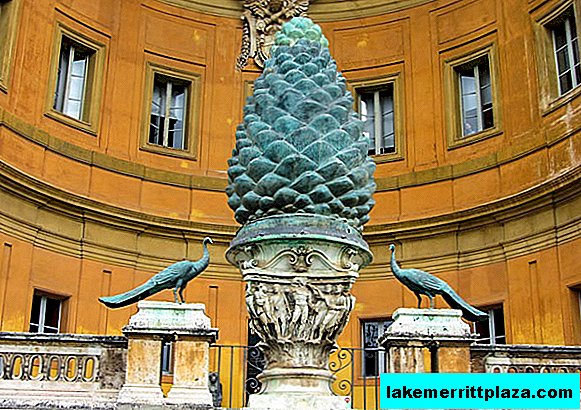
In the Pinecone Courtyard you can see unusual exhibits in the open: a giant pine cone decorating the fountain and a large bronze sphere. A fountain decorated with a cone is an ancient symbol of life.
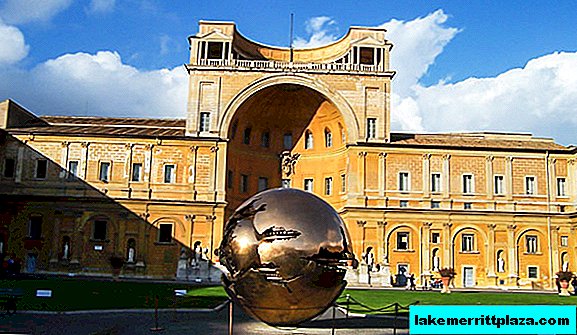
And the bronze sculpture “Sphere inside a sphere” (Sfera con sfera) sparkling in the sun is already a symbol of the life of a modern person. The installation of authorship by Arnaldo Pomodoro (Arnaldo Pomodoro) appeared in the Vatican in 1990 thanks to the efforts of Pope Paul II. A four-meter outer sphere, cast in bronze, is mounted on the Belvedere lawn, a smaller sphere rotates inside it.
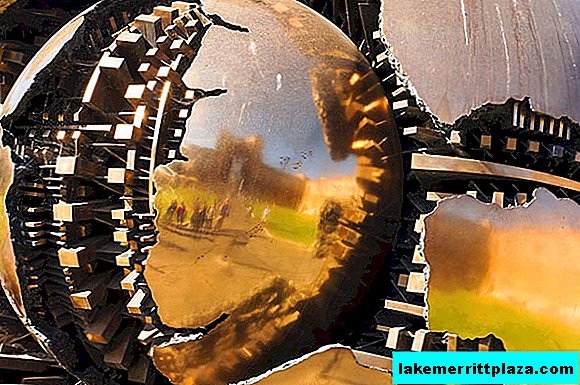
Through holes and tears in the outer shell, a pattern is printed on the inner ball. Thus, the architect depicted a modern symbol of life - the Earth, surrounded by the universe. And everything that earthlings do with their planet is transmitted to the outside world.
Pinacoteca
The collection of Vatican paintings has a complicated story: as soon as Pope Pius VI declared his collection at the end of the 18th century, and just a few years later, Napoleonic troops took the best works to Paris, where they returned with great difficulty and in very poor condition only after 20 years. Today in the Pinakothek there are about 460 works that tell the story of the development of painting from the primitive style of the Middle Ages until the 19th century.
Museums of the Apostolic Palace (Palazzo Apostolico)
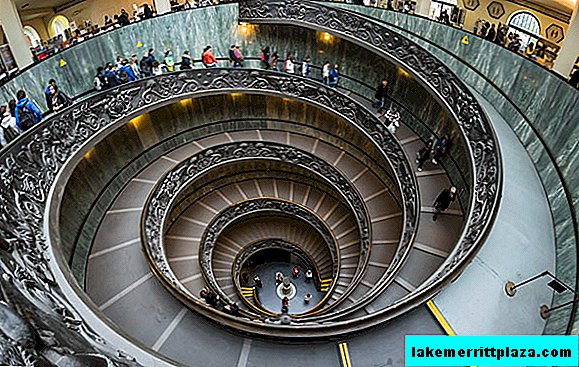
Entrance to the Vatican Museums begins with an unusual attraction - the spiral staircase of the architect Giuseppe Momo. A dizzying spiral staircase appeared in 1932. Own independent radii of the stairs and its railing allow you to capture the view of the building along its entire height!
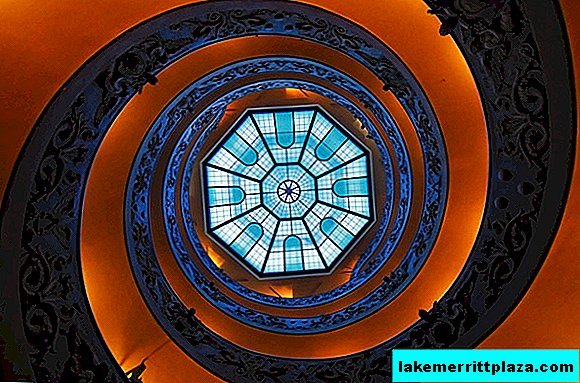
In addition, the descent, twisted into a ram’s horn, initially has a flat surface, which gradually turns into steps. So, having overcome a wonderful staircase, 7 kilometers of corridors and passages leading to 1400 halls filled with 60 thousand priceless exhibits will open to the attention of the visitor.
Raphael's stanzas
Three large and bright rooms in the north wing of the Apostolic Palace bear the name - Raphael Stanzas. In Italian, the word "stanza" means "room". Thus, three rooms painted by the undoubted genius of the Renaissance - Raffaello Santi (Raffaello Santi) will appear before admiring travelers.

The rooms have separate names according to the fresco theme: Court Room (Stanza della segnatura), Stanza di Eliodoro and Flame Room (Stanza dell'Incendio del Borgo). A huge room adjoins the stanzas - the Hall of Constance (Sala di Costantino).
Apartments Borgia
Part of the palace of Nicholas V is occupied by the Borgia Apartments (Appartamento Borgia) - the chambers of Pope Alexander VI.
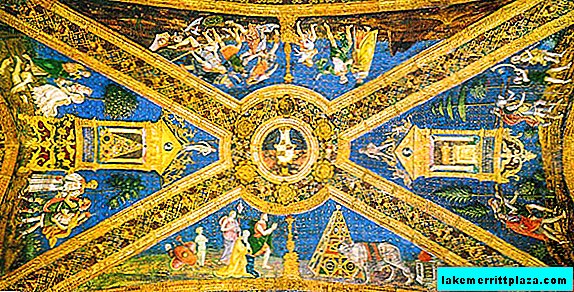
During the life of the pope at the end of the 15th century, the apartment vaults were painted by famous Renaissance artists: Pinturicchio and Bramante. The walls and ceilings of the halls are decorated with images of prophets and medieval sciences, as well as biblical subjects.
Gregorian Etruscan Museum (Museo Gregoriano Etrusco)
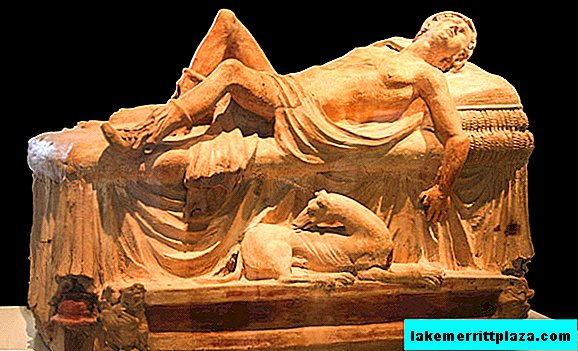
The Gregorian Etruscan Museum was founded in 1837. It will allow you to make an excursion into the past of Italy. Etruscans are the ancient inhabitants of the Apennines, whose heyday of civilization came in the 8th century BC. The museum has a rich collection of objects of culture, religion and everyday life of the Etruscans. In 22 rooms, statues, bronze, machined stone, and ceramics items are exhibited.
Vatican Apostolic Library (Bibliotheca Apostolica Vaticana)
Vatican scientists will be interested in the Vatican Apostolic Library. Specialists can get here only by appointment in a few months.
In 1475, this museum was founded by Pope Nicholas V. Over the past 6 centuries, about 1 million 600 thousand typographical-printed books have accumulated in the library. About 150 thousand manuscripts, the same number of prints, a large collection of geographical maps, award medals and coins, tapestries and even candlesticks! All exhibits are carefully stored and restored as necessary.
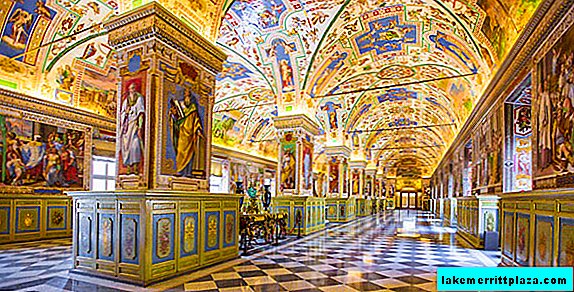
The original purpose of the Vatican Library is an archive of important documentation. Over time, library funds expanded, filled with rare editions. Wall and ceiling frescoes of Ghirlandaio, Melozzo da Forli, Romano (Antonio Aquilio) cannot leave indifferent. Particularly impressionable guests believe that whole halls with forbidden literature are hidden from the eyes of mere mortals.
Chiaramonti Museum (Museo Chiaramonti)
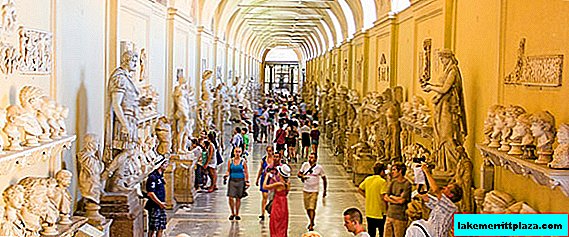
The Chiaramonti Museum is called to immortalize the real name of one of the popes. Pius VII - a representative of the old Italian clan Chiaramonti secured the support of Antonio Canova and at the beginning of the XIX century created a museum dedicated to sculpture. The vaulted gallery connecting the Apostolic Palace with the Belvedere, decorated with statues and busts, was called the Corridor. The most interesting in this part of the exhibition are the bas-relief "Three Graces" and the ancient stone heads of the celestials of Poseidon and Athens.
A relatively new part of the Chiaramonti Museum was called the New Wing (Braccio Nuovo), in the halls of which are collected works of art from the times of Ancient Greece and the Roman Empire.
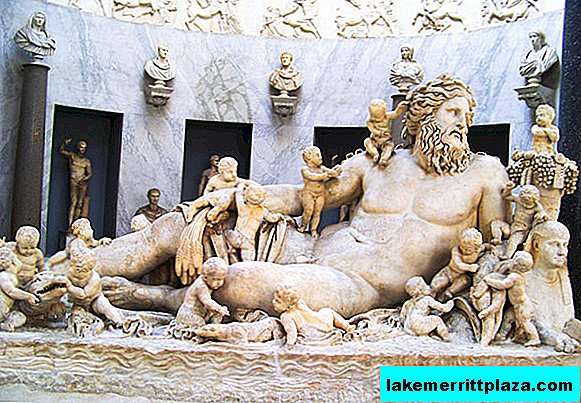
A strong impression is made by the bright room, made in a classical manner. Statues of ancient deities, emperors and warriors are displayed in niches between the columns. The third part of the Chiaramonti Museum presented by Galleria Lapidaria - an impressive collection of inscriptions of the early Christian and pagan periods.
Museum of History (Museo Storico Vaticano)

The modern history of the Vatican, as well as the life of the popes of the XX-XXI centuries, is brightly lit in the Historical Museum. Among other wonders, visitors to this exhibition will be able to look at the armored Papamobiles, the layout of the locomotive used by the Vatican in the 30s of the last century, carriages and other attributes of papal life.
Papal garage
The carriage pavilion, or Papal garage, has been one of the most unusual parts of the Vatican Museums since 1963. Here is a fascinating history of the movement of pontiffs: dozens of carriages, 12 cars, a Ferrari racing wheel, palanquins, harnesses, saddles, aircraft models, a steam locomotive and even a ship. A luxury carriage for ceremonial performances and a papamobile, during the trip on which an attempt was made on John Paul II, rebuses with the search for the place where the coachman and armored vehicles were sitting - there is something to surprise both adults and children!
Tips
In the Vatican Museums you can spend more than one day. At a minimum, you need to make a plan of the exhibits and halls that you want to see. A good standard solution would be an audio guide, and ideally, a professional guide accompaniment.
For visiting museums we recommend the best, according to the site ITALY FOR ME, licensed guides to the Vatican Museums - Marina Bogacheva, Irina Kravchenko and Elena Vyaznikova. We have been looking for and choosing worthy, not boring professionals for a long time and are happy that we can advise them. In 4 hours, you will receive a maximum of information in an easy and accessible form. You need to sign up for good guides at least 2 weeks in advance, for May and New Year holidays for a month and a half.
All excursions to the Vatican with the Italy team are for me in this section.
- We recommend reading: what to see in Rome with a guide
Tickets
Opening hours of the Vatican Museums: from 09:30 to 18:00 from Monday to Saturday. Ticket sales offices are open until 16:00. Museum rooms should be left half an hour before they are closed.
A large influx of tourists spills out into huge lines for tickets. There is one good way to avoid hours of "downtime" - use the instructions and the official website of the Vatican: //biglietteriamusei.vatican.va/musei/tickets/do?action=booking. in English or Italian. Please note that the official website of museums in Russian is not presented.
The total cost of the ticket is 17 euros, and an extra 4 euros for pre-ordering a ticket will pay off with time saved. There is also an audio guide containing 400 mp3 files with useful but boring information about all the sights of the Vatican. The cost of renting an audio guide is 7 euros.
Opening hours in 2019
Using the calendar below (clickable picture) you can plan a visit to the Vatican Museums in 2019. Opening hours: all days except Sunday, from 08:30 to 17:00
The dates are highlighted in green, the last Sunday of the month when admission to museums is free - we do not recommend visiting them these days because of the huge lines and crowds.
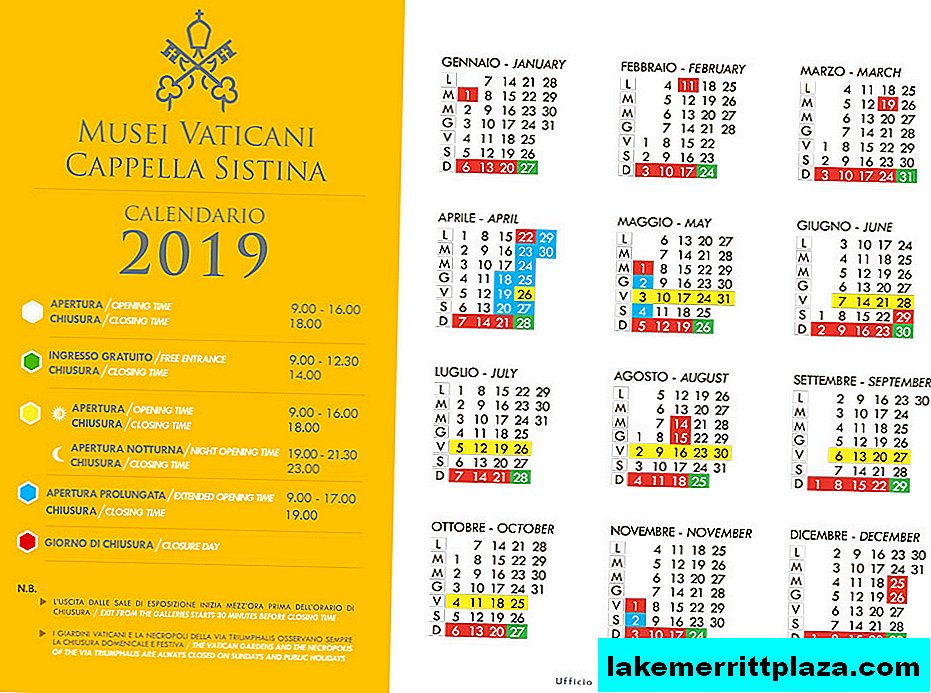
Also in 2019, it would be a bad idea to visit museums on datesJanuary 2, March 18 and 20, April 23, May 2, June 27-28, July 1, August 12-13 and 16-17, October 31, November 2 and 4, December 23-24 and 28, since these are dates adjacent to major religious holidays in which museums do not work, which means there will be increased demand for them. Get ready for the huge crowds inside and the lack of tickets at the box office in about 2-3 weeks.
Museums will be open on Fridays in the evening from April 26 to October 25, 2019. Friday night working hours with 19:00 to 23:00
Where is the entrance and ticket office located?
Before visiting museums in the Vatican, I advise you to study the scheme presented below. The map shows the entrance to the museums - note that it is about a 15-minute walk from St. Peter's Square.
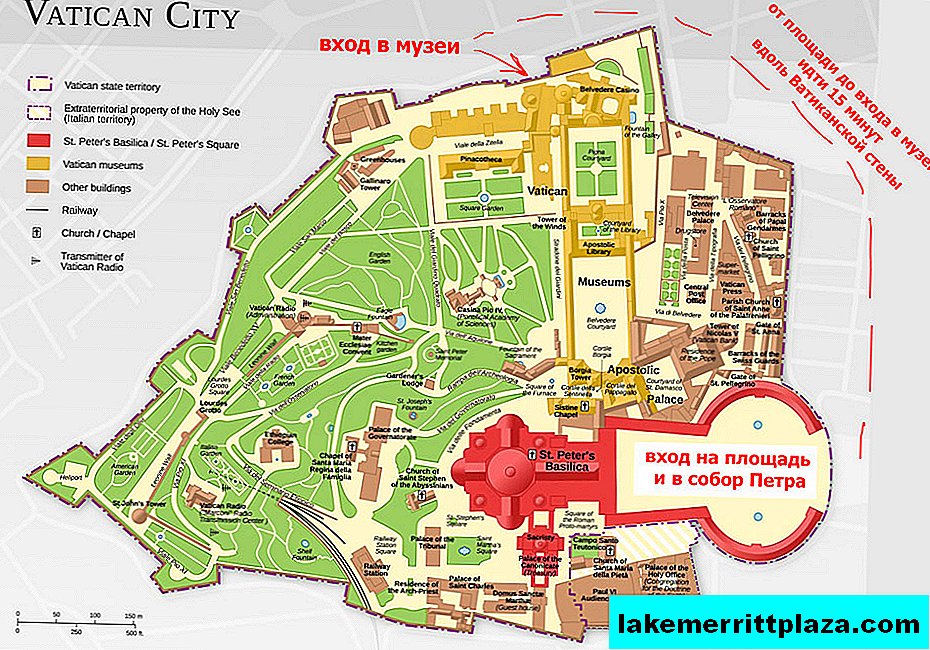
If you stand facing the cathedral, then at the ticket office you need to move to the left along the Vatican Wall. Halfway there you will see the line, if you have not booked tickets online, you will become a member and after a few hours you will be able to enter the museums.
If the tickets have already been purchased in advance, then immediately go to the entrance, show the guard the reservation and get tickets at the box office.
